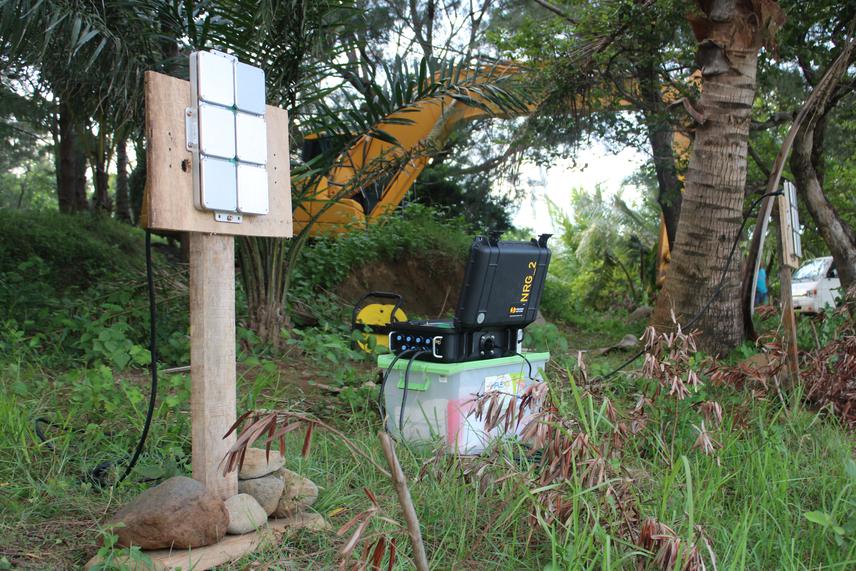Matthew Crane
Southeast Asia contains high bat species richness and endemism. However, increased wind power development in Southeast Asia will threaten bat communities. Acoustic deterrents may reduce bat mortalities at wind farms; but current deterrents were developed for species with lower echolocation frequencies than many bats found in SE Asia. Additionally, SE Asia has numerous species that do not echolocate and thus may not be affected by acoustic deterrents. We have two main project goals: determine which SE Asian species are sensitive to wind turbines and assess which species are affected by acoustic deterrents. The results will help quantify potential impacts of wind power development and evaluate the efficacy of acoustic deterrents to reduce mortality rates.

NRG acoustic deterrent.
Southeast Asia is an important region for biodiversity, with incredibly high species richness and endemism. Bats are a critical component of this landscape: they comprise nearly 30% of Southeast Asia’s mammal species and provide vital ecosystem services (Kunz et al., 2011). Wind energy poses a potential risk to bat communities through a range of impacts including both direct and indirect effects (Northrup and Wittemyer, 2013; Arnett et al., 2016). Energy demand will rise dramatically in Asia over the next 20 years (International Energy Agency, 2017), thus it is critical to assess the potential impacts of wind development on Southeast Asian bats. Identifying vulnerable species is important to provide a baseline for monitoring wind impacts on bats, but it is also essential to provide wind power producers with practical ways to mitigate ecological impacts. Acoustic deterrents, which use a range of high-frequency sound to "jam" bat echolocation, have shown promise in reducing bat mortality around wind turbines in the US (Arnett et al., 2013).
We will test the acoustic deterrents at ponds with high bat activity, and at orchards with high activity levels of Cynopterus brachyotis (relatively common fruit bat which seems to be frequently killed at turbines), since it is unknown whether these non-echolocating bats will respond to deterrents. We will test two types of deterrents, one with a tested effect frequency range between 30-50 kHz, and another that covers up to 70 kHz. We will also monitor bat fatality rates at wind turbines each month to determine which species are susceptible to wind turbine collision.
Our work will provide a framework for determining which species traits correlate with higher collision rates at wind turbines. Additionally, we will be able to identify which species acoustic deterrents will prove effective. As the installation of these deterrent devices directly on a wind turbine is relatively expensive and complex logistically, we will do initial field-testing near the turbines to assess their efficacy on target species prior to installation. The results will help wind project managers understand the potential impacts on bats for new projects, and to determine whether acoustic deterrents offer a cost-effective way to reduce wind turbine fatalities.